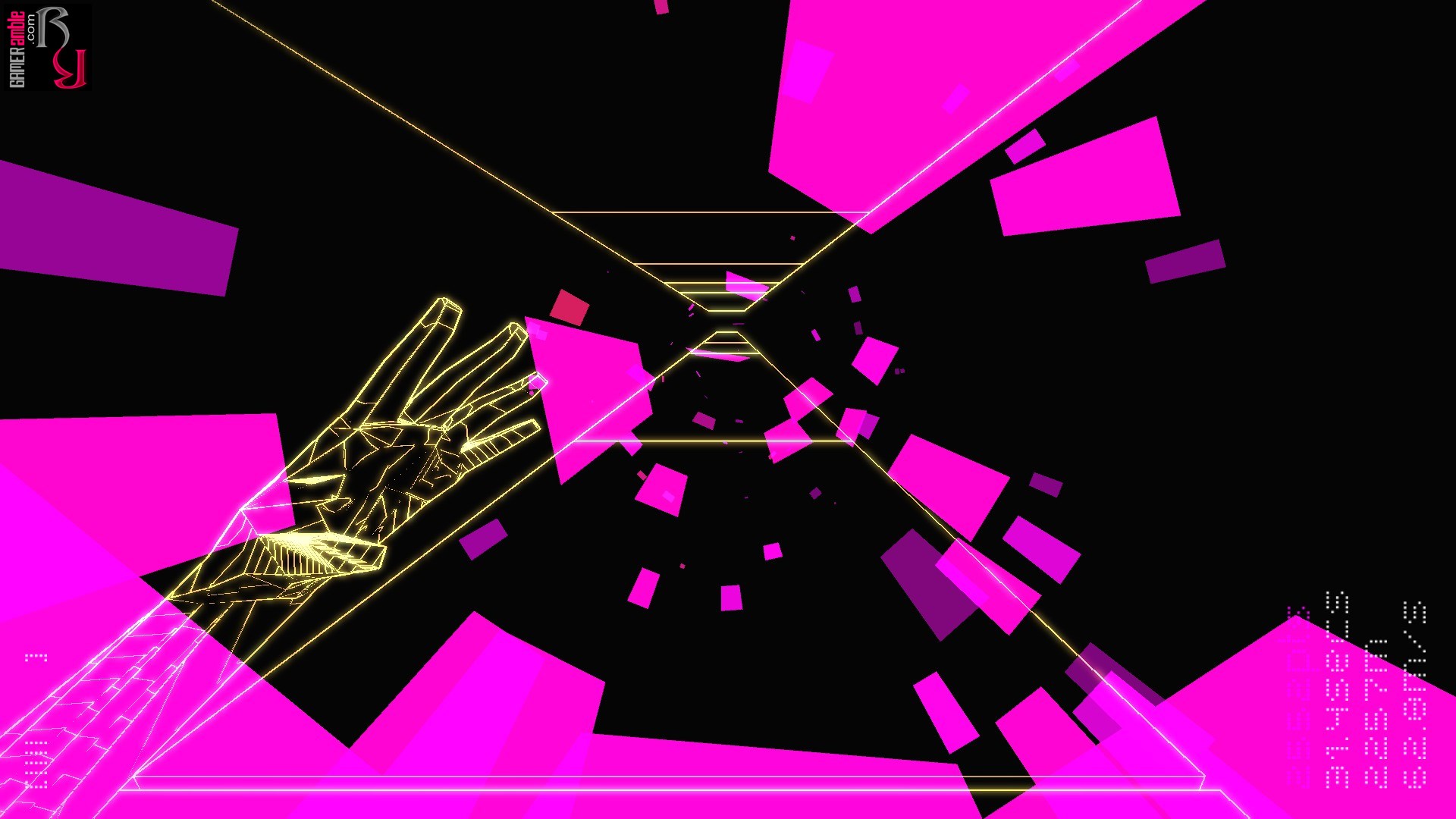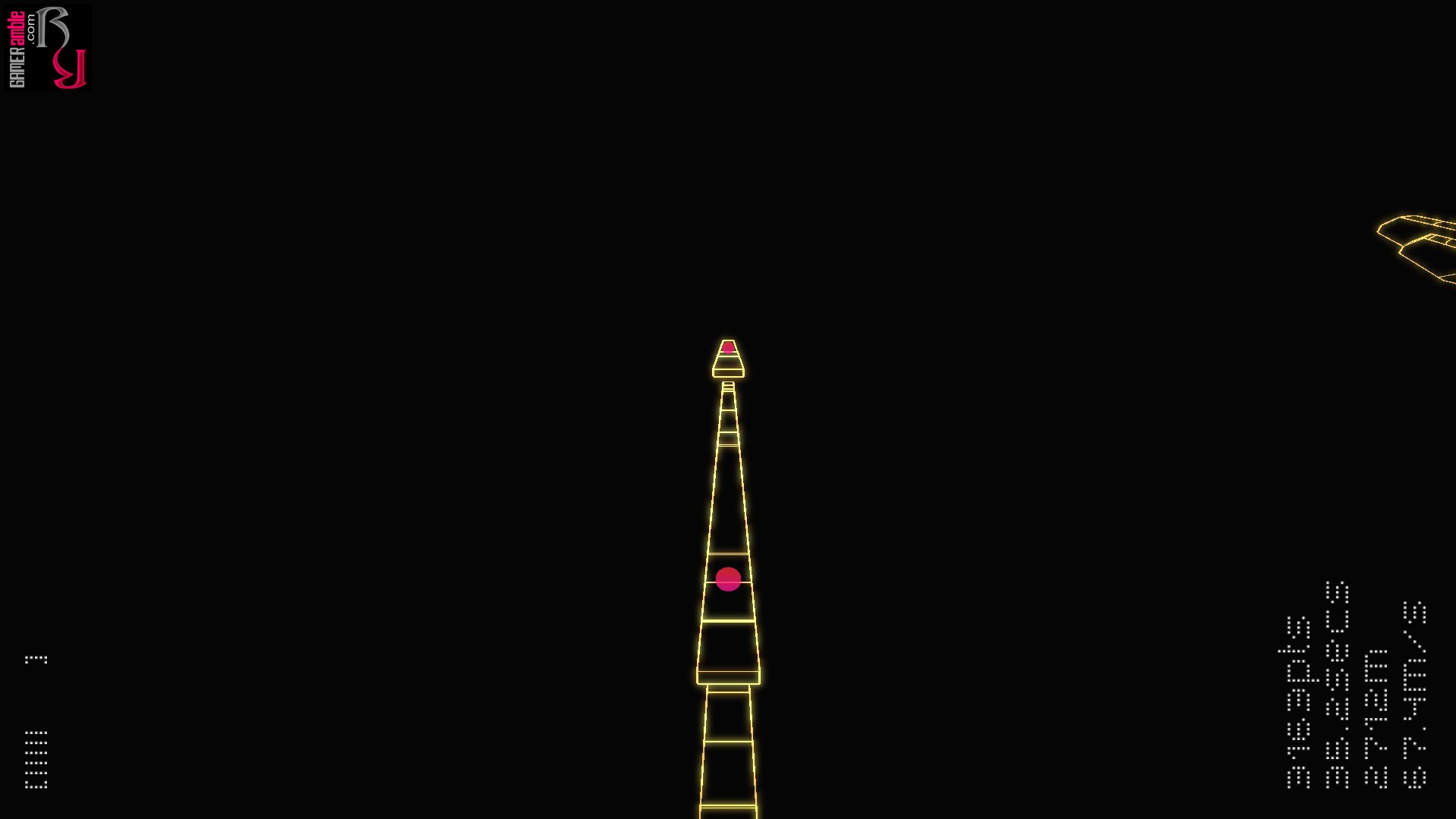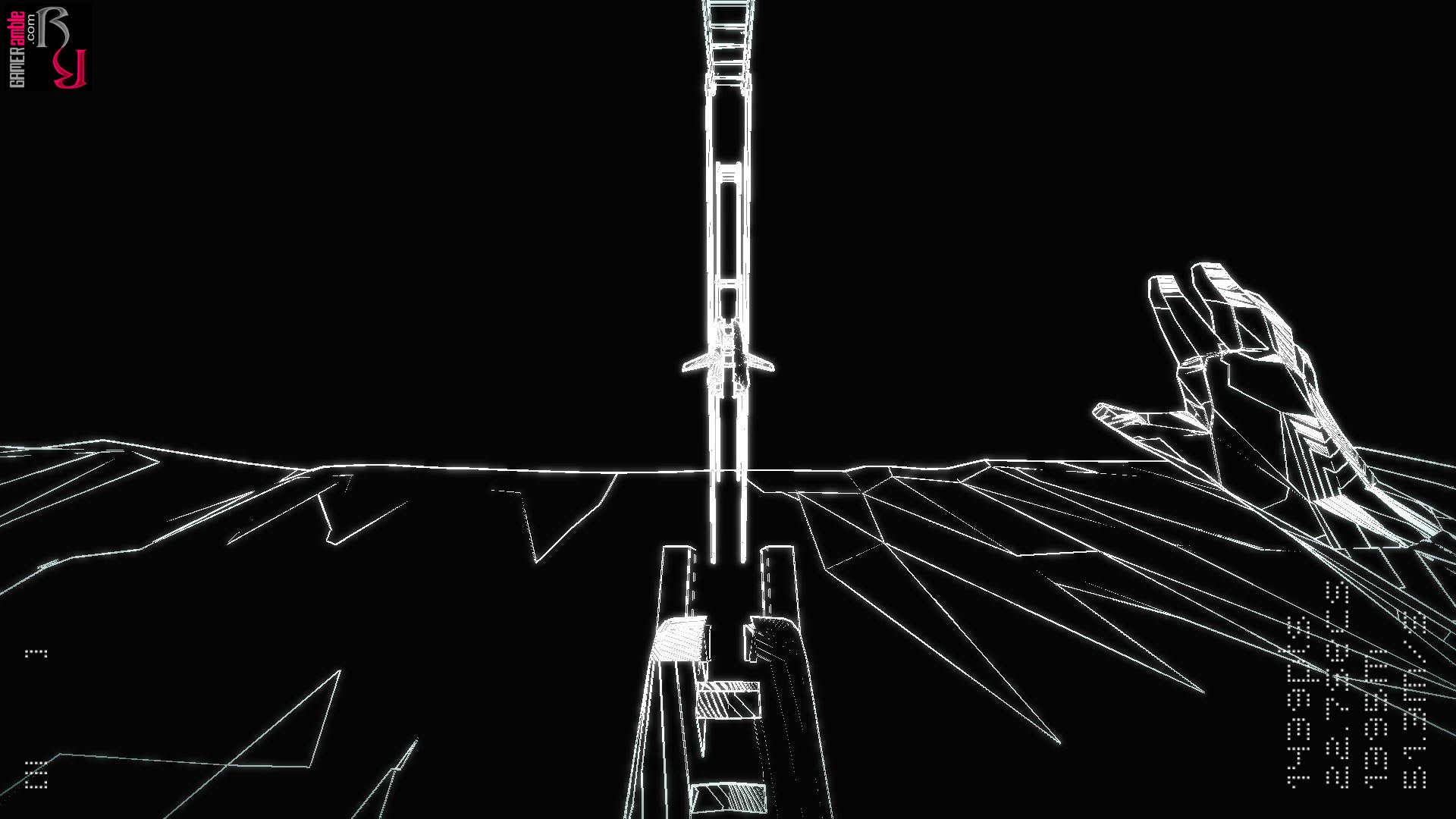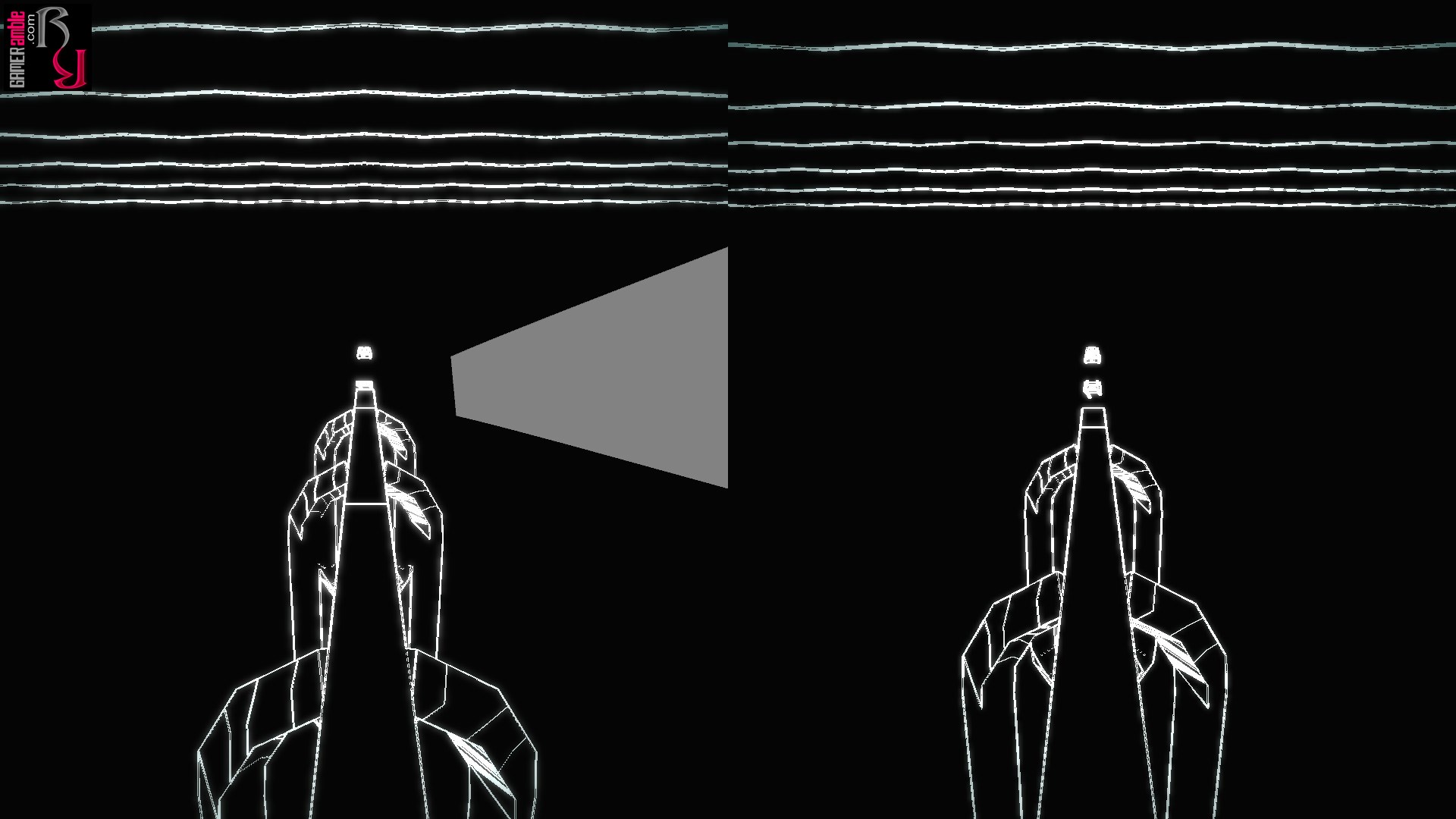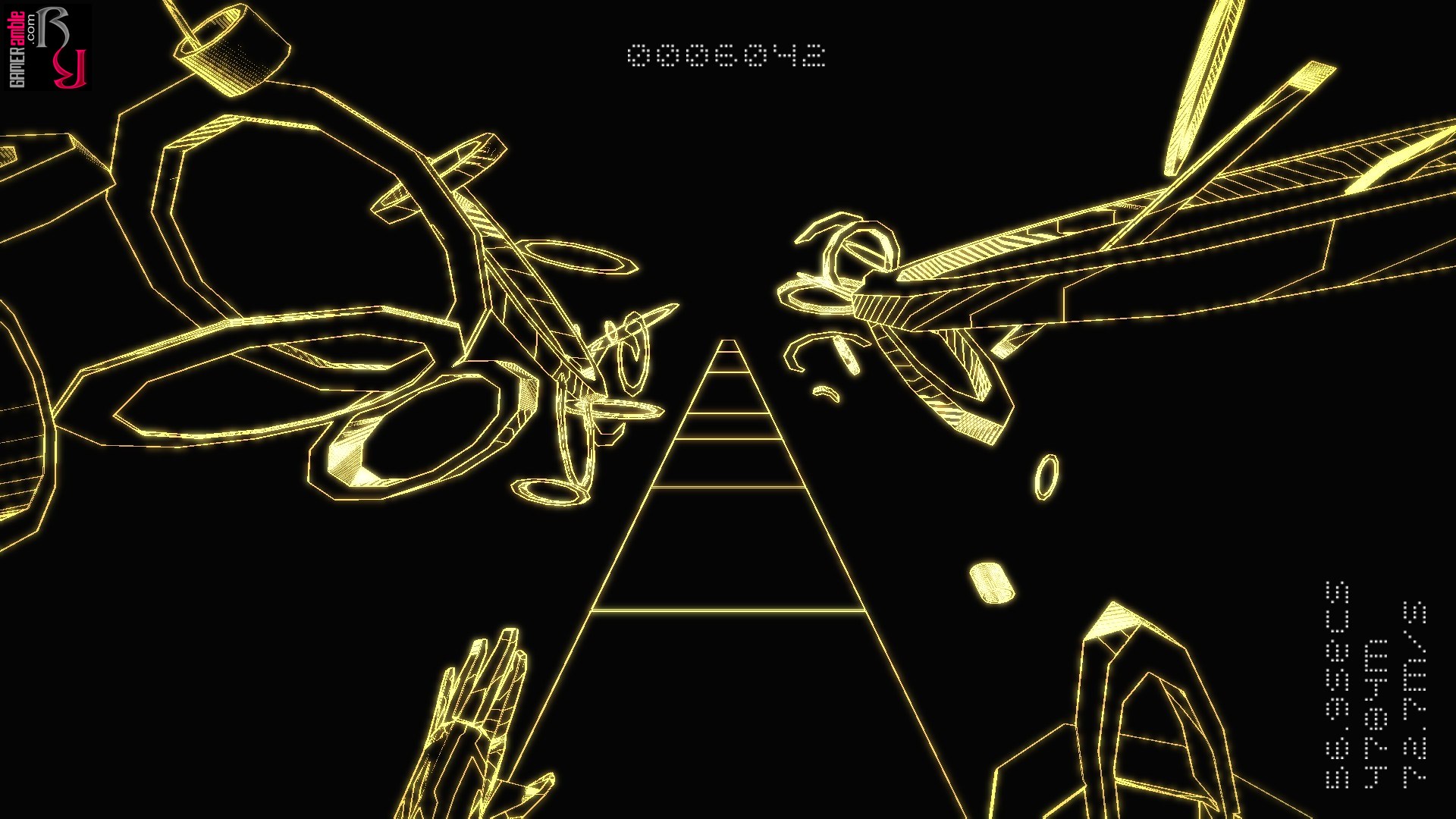FOTONICA
Developer: Santa Ragione | Publisher: Santa Ragione |Release Date: 2014 | Genre: Action / Indie | Website: Official Website | Format: Digital Download
FOTONICA doesn’t even try to devise an excuse for why you are sprinting at breakneck speeds through a surreal vector landscape. Instead, it tells you, “Running at 140mph is fun; see if you can handle it,” and lets you get on with the task. Of course, it is not the first endless runner built around the concept of speed, but by taking the action to a whole new dimension, it certainly stands out from the rest of the pack.
The combination of the first-person perspective and crisp, vector-style visuals provide FOTONICA with a very distinctive look. The complexity of the visuals can be adjusted, so at the lowest setting, it looks like one of the old vector arcade machines. In contrast, at the highest setting, the environments actually look more like wireframe models. If you play on the more simple visual setting, you’ll miss out on the mountains, buildings, forests, railroad tracks, and roads, but since there is less visual clutter, it can also help you to do better and react faster. Each level is set in utter darkness, with only the glowing vector lines drawing you in, giving the game a sense of desolation. The white lines turn a golden yellow if you reach high speeds, but the minimalist use of color certainly helps with the hypnotic sensation of speed. Even the vector shapes of your arms visible as you run and jump can be disabled if you find it too distracting.
While the environments might look complex to navigate, you only have to worry about using a single button. Forward momentum is maintained by holding down the button and releasing it causes your runner to jump. While in the air, you can wait for your runner to descend or hold down the button to speed up the process. The latter is vital sometimes; otherwise, you will overshoot the nearest platform and plunge into the void. Deciding when to speed up your descent or when to jump is often the most important decision you have to make in FOTONICA, and a single miscalculation can cost you your speed at best and lose you the level at worst. This means that some trial and error is involved until you have mastered the levels, but restarting after you lose is an instantaneous process, and the levels are not long enough to make restarting a chore either.
The arcade mode features eight different tracks that are unlocked in a linear fashion. This can be frustrating if you are stuck on a track and want to advance, but since there are four different difficulty settings, the game should be accessible enough for most players. The arcade levels feature multi-layered designs, so it is possible to end up on lower platforms by accident or intentionally. While keeping to the uppermost platforms might sound the safest, you’ll miss out on the red dots spread across the different paths and provide you with a score boost. Apart from the arcade mode, there is an endless mode with procedural levels, although these don’t feature higher and lower paths as in the arcade mode. Since the game is so easy to control, it can also be played in split-screen via the Versus mode, which supports up to four players. No matter which mode you choose, the game is great for playing in quick bursts whenever you feel like killing some time or want to take another stab at the online rankings.
The game’s audio is just as minimal as the visuals and features a very fitting electronic music soundtrack. The tracks are a little mellow for our liking, as we would have preferred something more adrenaline-pumping to complement the breakneck speeds, but with a decent pair of headphones, the audio is quite immersive. The more understated tracks are also easier on the ears for longer playing sessions. There aren’t many sound effects aside from the pounding of your footsteps and the occasional grunts of exertion from your runner. The latter can be either male or female, which is a rather neat touch. One sound you’ll learn to hate is the jarring impact from smacking into the side of a platform after coming up short on a jump, something that can happen frequently enough to have its own achievement.
The arcade-style gameplay and simple controls might make it seem like there isn’t much depth to FOTONICA, but it is easy to become hooked by this game. Our only complaint is that there are so few levels, but considering the number of hours we spent playing the game, it certainly offers enough value for money. If you are looking for a pure arcade experience with a unique perspective and streamlined controls, FOTONICA is highly recommended.
System Requirements
- OS: Windows XP SP3 +
- Processor: 2.0GHz CPU
- Memory: 2 GB RAM
- Graphics: 512MB graphics card
- Hard Drive: 250 MB available space
- Graphics: Pixel Shader 3.0
- Network: Broadband Internet connection


